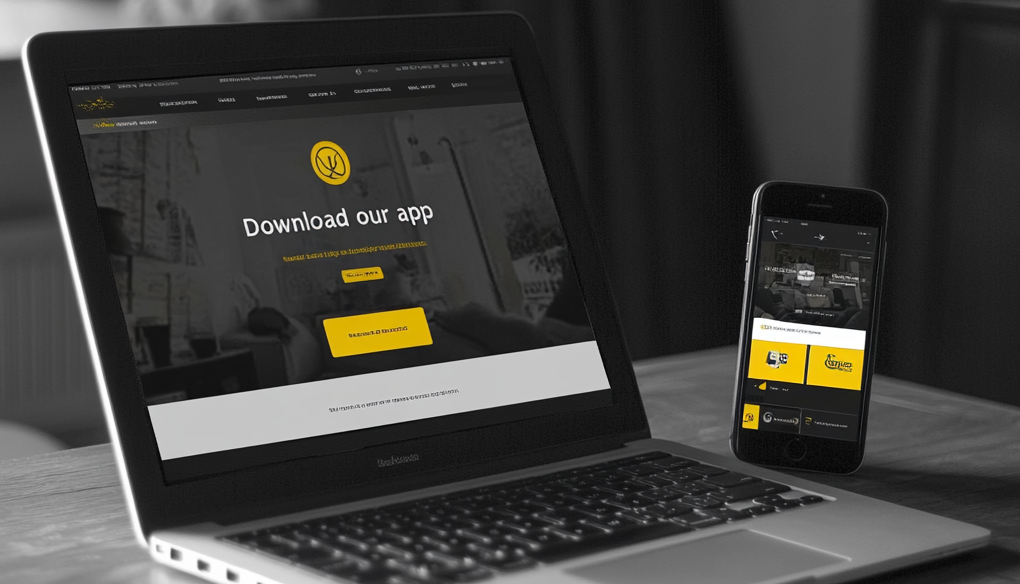If you succeed with CRM, your customers will be happier, return to your business, and tell their friends how good your products are. Moreover, your employees will feel comfortable and have guidance, data, and tools to drive the business forward daily. A customer-oriented company does not come for free, but it is no utopia. Taking action on these five cornerstones is an excellent first step!
By: Oscar Siljebrand on October 4, 2023 | Reading time: 9 minutes
Marketing has evolved rapidly in recent years, where new channels and technology drive the development forward. However, some areas are equally important regardless of the prevailing trends. Customer Relationship Management (CRM) is a common feature in digital marketing but is a term that means different things depending on who you ask. Some use it to increase sales, others to increase loyalty, a third may use it to reduce churn, and some may argue that it is best suited for analyzing customer behavior. You will likely receive five different answers if you ask five marketing managers. However, reaching a consensus on what CRM means is immaterial if the methods and results help your company get where you want.
This article explains five fundamental cornerstones of CRM that we at Curamando work within both on a strategic and operational level. Regardless if you want to refresh your memory or increase your knowledge in the field, this can be seen as an introduction to CRM rather than a deep dive.
The five cornerstones of CRM
- Inbound Marketing & B2B CRM
- Customer data – Segmentation & System implementation
- Increase loyalty & retain your customers
- Customer service through proper CRM
- Insights and analyses
1. Inbound marketing & B2B CRM
Inbound marketing answers the question, “How to turn leads into customers” and is, historically speaking, CRM’s starting point in B2B sales, where you have a web page that potential customers visit. In practice, this means that you as a company want to offer exciting and interactive content, resulting in the visitor giving their contact consent and thus starting the journey towards becoming a customer.
Four tips to convert your visitors into customers in B2B-CRM:
- Publish articles – tips on how to succeed in your industry (like this article you are reading right now), insights and trends, or other exciting content your customers are interested in.
- Publish industry trends and reports – breaking news, numbers, and figures relevant to your company’s customer segments.
- Product demos – illustrate which demand your product offers a solution to.
- Trials & freemiums – offer a limited free trial of your product (or have a basic license of your product or service that is free).
When collecting data, you need to store it in a structured and automated way that makes it available to your business (e.g., your organization). This is done in a CRM system.
Typical data that you collect from B2B customers:
- Email address
- Company name
- Company size
- Product interest
- Phone number
- Role or title
The example above is regarding B2B marketing. When collecting B2C data, there are other parameters to consider. At the time of purchase, you get access to transactional data from the purchase, and you can also collect consent for marketing. The same applies to loyalty programs, where you have an opportunity to give the customer something in return and thus increase the possibility of receiving consent to marketing. Here, their journey begins toward becoming loyal customers.
Five tips for collecting data from B2C customers:
- Offer something in return – such as free shipping, pre-sale of collections, or discount on additional services.
- Be transparent about how you will use the data – keep it simple and honest.
- Only collect consent according to applicable laws and regulations.
- Offer customers to update preferences for marketing at each contact.
- Put time and resources into ensuring your communication is as good as possible. Don’t underestimate that email marketing content creation requires time!
2. Customer data – Segmentation & System implementation
Once you’ve collected data, your CRM infrastructure must provide a user-friendly and business-oriented interface where your employees can easily see the customers and their relationship with your company in real time (or at least as automated as needed for your specific business).
In this context, the CRM system plays a central role, and you need a CRM system (or Marketing Automation system, Customer Experience system, or similar platforms – there are many tools and names, but in this text, we call it CRM system for the sake of simplicity) that is adapted to your business. This you can obtain in two ways.
The first way is to procure and choose a CRM system that suits your business to the highest possible degree. When selecting, the procurement phase must focus on detailed requirements and examine if the CRM supplier meets your business requirements for functions and user-friendliness. It may be valuable to seek external consultation to identify requirements and specifications throughout the procurement phase.
The second alternative is choosing a CRM system that can be configured and tailored to fit your business and needs. Most CRM systems can be configured to a certain extent, so ensure you understand the complexity, difficulty, and cost of tailoring the CRM system.
Follow these three tips to ensure you choose the right CRM system:
- Put effort and resources into requirements and procurement – consider consultation from an external and independent party.
- Ensure that the CRM system is or can be adapted to your business and your needs – a recommendation is to ask suppliers, “What need is your system primarily created to cater for?”
- Use an expert within implementation and configuration as your partner. This type of support can be provided by the supplier or an external company. When implementing a larger CRM system, a specialized external partner is often used to reduce cost and secure availability during the implementation project.
With access to CRM data, you have a solid platform for working with personalized communication where the customer receives offers and information depending on preference, history, and phase in the customer journey. It will also provide you with good segmentation possibilities and a tool to improve KPIs, whether your goal is to increase the average order value, website traffic acquisition, increase sales, or gather customer insights.
3. Increase loyalty & retain your customers
It is essential to understand what your customer wants, and this understanding helps you create the best possible offer for that individual. Loyalty programs and sending relevant communication keep customers happy and engaged. It is a cost-effective and revenue-generating approach. The advantages of loyal customers are a higher amount of orders, higher average order value, and that they cost less to “educate” in the customer journey. It’s 5x more costly to acquire new customers than retaining existing ones.
But loyalty doesn’t come for free. Your brand or your standard offering needs to build loyalty. Loyalty must be earned and this requires an investment. Many companies use bonuses, discounts, and kickbacks to create loyalty, but several other methods can strengthen the customer’s bond with your brand.
Examples of how to increase loyalty:
- Offer free or discounted shipping on the most sustainable shipping method, exclusively for your loyal customers.
- Offer digital receipts and extended warranties for your loyal customers.
- Offer discounts or free additional services for your loyal customers, such as tailoring services if you sell clothes or installation services if you sell technology.
Loyalty is created by you, as a company, going through every part of the customer journey ensuring that it benefits the most loyal customers and that there are no thresholds or other energy leaks where customers can be dissatisfied. Loyalty requires long-term work where the brand, the offer, and the customer journey are prioritized over discounts, mass campaigns, and short-term sales efforts.
4. Customer service through proper CRM
Why do we associate customer service with CRM? A well-functioning CRM and a customer-oriented sales journey provide the best opportunity to create positive customer relationships. In the single customer view in your CRM system, the customer service team receives data and information at the level required to handle an unsatisfied customer or address the customer’s questions. In an advanced customer journey, you pick up the customers’ thoughts and dissatisfaction early and confirm the customer, whether it happens via a comment on an Instagram post, via email or phone contact. It can turn a dissatisfied customer if you play your cards right.
Excellent customer service from a CRM perspective:
- See and confirm the customer. Always answer. Don’t underestimate the value of putting resources into answering all questions on social media, even if it takes time.
- Embrace help from your ambassadors. Let customers rate your products and allow them to answer other customers’ questions in community-based environments. As compensation, you can offer points in the loyalty program.
- Start from the single customer view when you talk to a customer. Give the customer service employees access to good data to understand what the customer bought and what contacts and history the customer has with your company.
Empower the frontline to influence the customer directly in the customer meeting. This means that customer service should be able to turn the customer from dissatisfied to satisfied and make the decisions considered necessary to resolve the situation directly, whether it is in a store, on social media, or via customer service.
5. Insight and analysis
Understanding the customer is an integral part of CRM, and in a well-functioning CRM infrastructure, you can analyze customer insights and behavior. When you connect your CRM to an ERP system to reach transactions and buying habits, you can dig into customer behavior and create relevant customer segmentations that add value to your organization. A well-structured data environment in CRM is also often needed to build analysis functions and dashboards within your company.
Three different analysis possibilities created in a CRM system:
- Data from newsletters, push & SMS – opening frequency, click rates, userjourney drop-off points, and the channel revenue are all important key figures that a CRM channel can be measured on.
- Customer surveys – Since CRM is based on first-party data, you as a company have a great opportunity to constantly collect customer insights through surveys – What does the customer satisfaction index look like? What do customers think of your products? What part of the service should we develop? By working data-driven with the customer base and continuously asking questions, the CRM department becomes the go-to place for answering these questions.
- Segmentation and customer types – CRM data is the basis for grouping your customers into segments depending on aspects such as stage of life, purchasing power, price sensitivity, product interest, and purchase history. These segments are helpful for the entire organization to understand who the customer is and how to reach them.
We hope you have an even better idea of how CRM can contribute to your company and close the gap with your customers. Feel free to contact us if you need a push in the right direction to get started.
About the author
Oscar Siljebrand is an advisor at Curamando & ARC in Customer Relationship Management and Loyalty.





